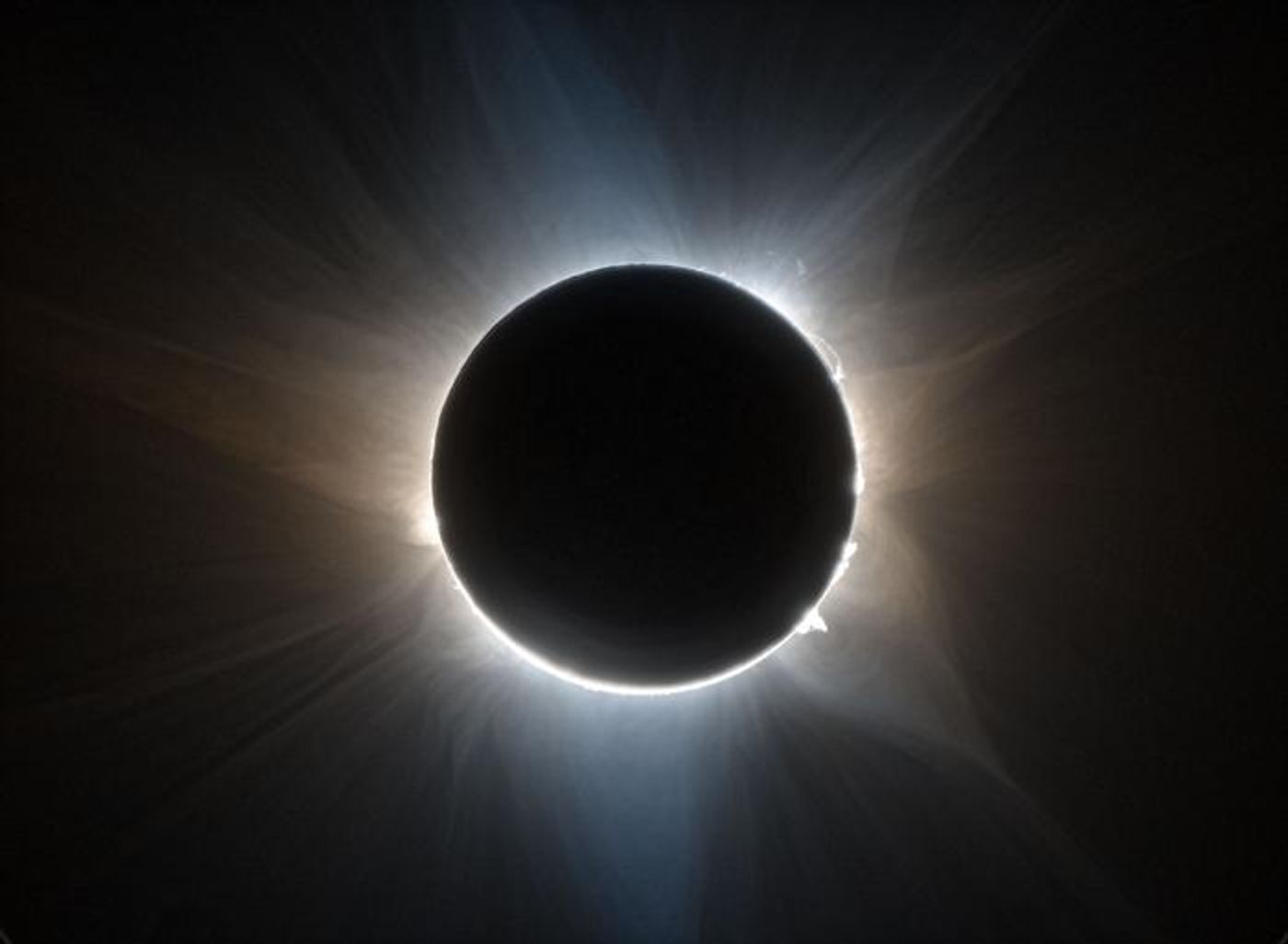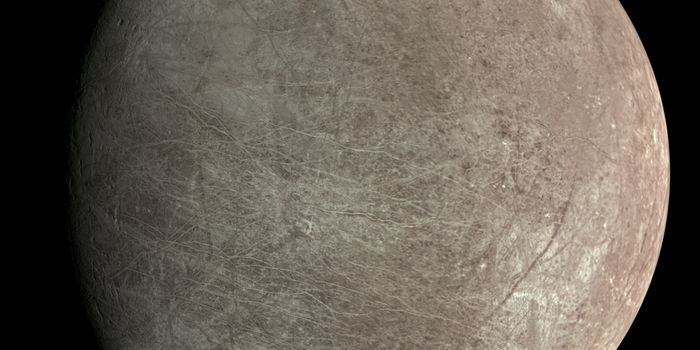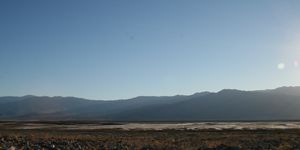NASA Funds Three Projects for 2024 Total Solar Eclipse
NASA recently announced they will be funding three science projects that will conduct experiments during the total solar eclipse on April 8, 2024, that will pass through North America starting in southwest Texas and traveling northeast where it will end in Maine. The goal of the projects, which build off work from the 2017 solar eclipse, will be to study the Sun’s outer atmosphere known as the corona, which is unobservable due to the Sun’s intense brightness but will be visible during a total solar eclipse as the Moon completely blocks the of the Sun. This is analogous to the brightness from a light bulb blocking out the surrounding environment, but if just the light bulb is covered up, portions of the surrounding environment become visible.
Image of the Sun and its corona (whispy features) during the total solar eclipse in Australia on April 20, 2023. (Credit: Courtesy of SwRI/Citizen CATE 2024/Dan Seaton)
“During next year’s total eclipse, hundreds of volunteers will capture images of the Sun and its corona to help answer real science questions about our star and how it affects us,” said Dr. Kelly Korreck, who is a NASA astrophysicist and NASA Program Manager for the 2023 and 2024 solar eclipses.
The first project is called “The DEB Initiative: Documenting the Corona Moment by Moment” and will involve instruments from 70 different locations along the path of the eclipse both in and outside the path of totality. The goal of the project will be to investigate both the speed and rate of solar material being discharged from the corona, which will help scientists better understand the origin of the solar material from the Sun’s surface.
The second project is “CATE 2024: Capturing Polarized Views of the Corona” and will involve more than 35 science teams from around the United States with the goal of measuring the flow of the solar wind through studying what’s known as polarization angles. All the images collected during the eclipse will be used to make a one-hour high-contrast movie meant to gain better insights into multiple aspects of the corona, including its evolution, structure, and heating mechanisms.
The third project is “Eclipse Megamovie 2024: Recording Dynamics Across the Corona” and will have more than 100 volunteers take over 1,200 images of the eclipse, which will be used to investigate how solar plasma (superheated gas) travels through the corona and the Sun’s chromosphere, which is the thin layer just beneath the corona.
“These three projects will build upon citizen scientific efforts from the 2017 solar eclipse and allow a multitude of ways to participate in the eclipse during the Heliophysics Big Year,” said Dr. Elizabeth MacDonald, who is a NASA Heliophysics citizen science lead. “Volunteers make this important research possible, and we look forward to seeing what they help reveal.”
What new discoveries will these projects make about our Sun during next year’s total solar eclipse? Only time will tell, and this is why we science!
As always, keep doing science & keep looking up!
Sources: NASA, NASA (1), NASA (2), NASA (3), EurekAlert!, NASA (4)









